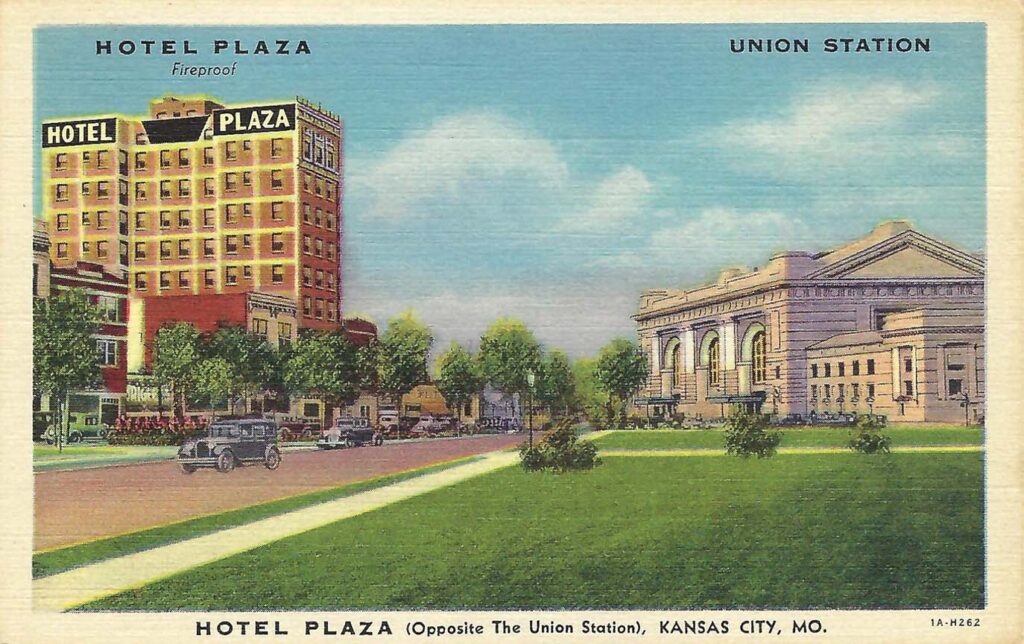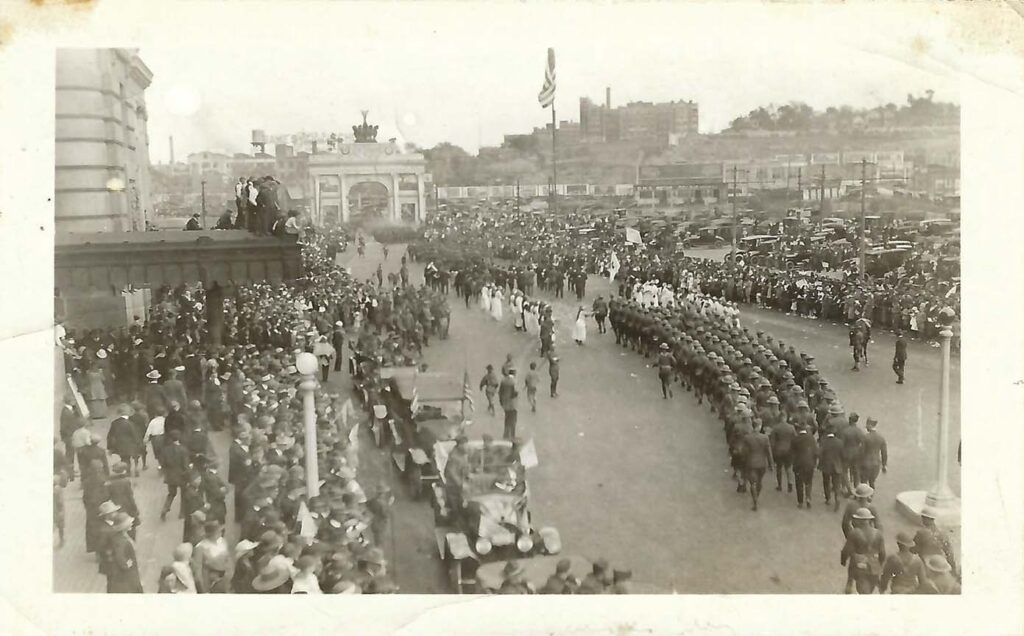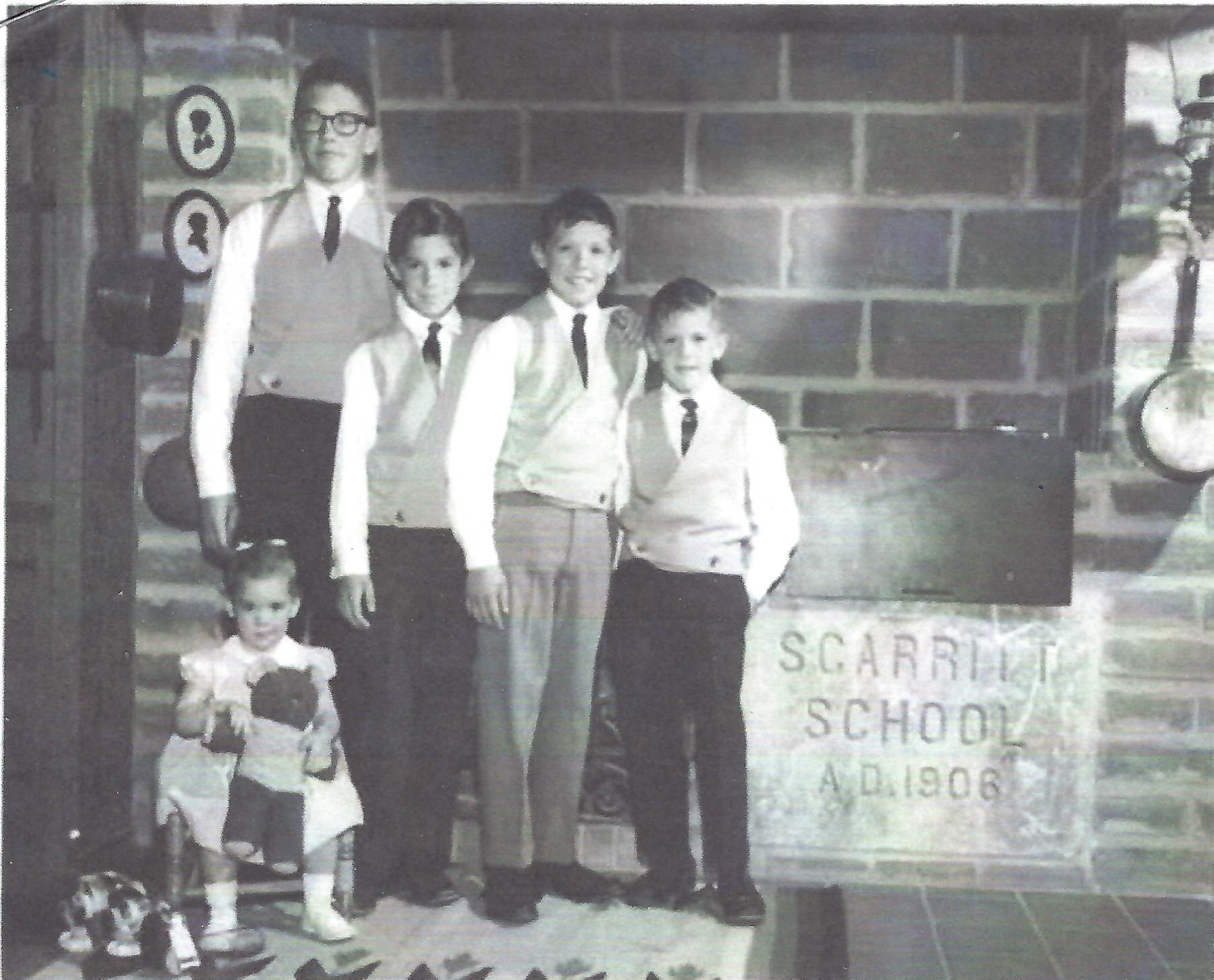
Michael Bushnell
Publisher
This Linen era postcard published by The Allis Press of Kansas City shows The Plaza Hotel located on Pershing Road just West of Main Street, directly across from Union Station. In addition to the nine-story Plaza, there were other businesses located in the strip of buildings adjoining the hotel. The original addresses were on East 24th Street prior to it being re-named Pershing Road.
The Ryan Hotel, was at 15 ½ E 24th was directly west of The Plaza Hotel. Sharing the front façade of The Ryan was the Union Station Billiards Parlor that advertised bowling, billiards, laundry and a shave for 35 cents.
The Plaza Hotel’s address was 13E. 24th and advertised rooms at $1.00 a night and up. It was popular with railroad engineers, brakemen and conductors who stayed overnight after completing their runs.
Just to the west of The Plaza was the Mack Hotel and Restaurant at 19 E. 24th. The Mack shared it’s front façade with a pawn shop that advertised “all kinds of pawned goods for sale cheap.”
The string of businesses were located on adjoining lots at the foot of a limestone bluff known as Signboard Hill, named so due to the number of huge signs prominent Kansas City businesses installed on the limestone outcropping to catch the eyes of the many rail travelers that came through Union Station.
All of the buildings were razed in the mid and late 1960’s in order to make way for the new Crown Center Hotel that opened in 1973, shortly after the opening of the new, KCI Airport in October of 1972.

In what is a celebratory parade following Armistice Day on November 11th, 1918, American troops can be seen marching in formation along a parade route that began at Union Station. Arches designed to replicate the great Arc de Triomphe in Paris, France were erected along the route for the troops to march through. Thousands lined the parade route, some even perching atop the porte cocheres on the south facade of Union Station. In the background of the photo, General Hospital can be seen on top of Hospital Hill. Directly beneath, sighboards at the base of signboard hill can also be seen. In the far left of the photo, the water tower atop the Rahe’s Auto and Tractor School can be seen atop that building. The school was a contracted training center for the United States Army during WW I and trained soldiers on a number of different mechanical areas including tanks and military vehicles. During the war it was the largest troop training facility in the United States.



















